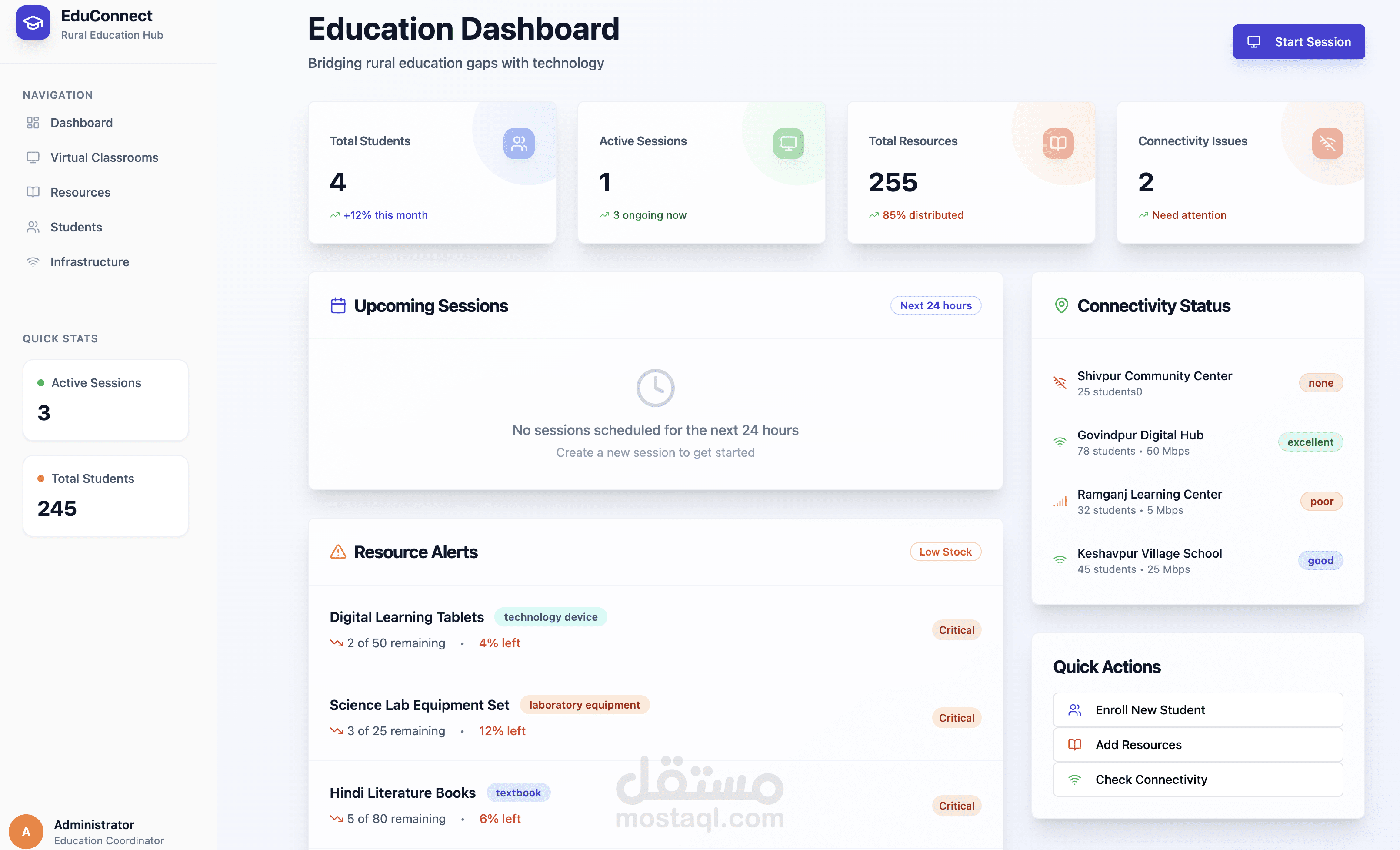Education Dashboard
تفاصيل العمل
Background: Rural areas in India often suffer from inadequate educational infrastructure, limited connectivity, and insufficient access to quality educational resources. This hampers the ability of students in these areas to receive a comprehensive education. Leveraging software solutions can help bridge these gaps by providing remote learning opportunities, optimizing resource management, and improving connectivity. Description: The goal is to create and implement software solutions that address the challenges faced by educational institutions in rural areas. This involves developing tools for remote learning, resource management, and connectivity enhancement. Strategies will focus on creating software that can facilitate virtual classrooms, manage educational resources efficiently, and provide support for infrastructure planning and development. Innovative Solutions: a) Virtual Classroom Platforms: o Develop cloud-based virtual classroom software that supports live streaming of lessons, interactive tools for student engagement, and recording capabilities for on-demand access. This solution can help overcome the lack of physical infrastructure by bringing quality education directly to students in remote areas. b) Educational Resource Management Systems: o Create software to manage and track educational resources such as textbooks, digital content, and teaching aids. This system can help schools inventory and distribute resources effectively, ensuring that materials are available where needed and reducing wastage. c) Internet Connectivity Optimization Tools: o Develop software that can optimize and monitor internet connectivity in rural areas. Tools can include bandwidth management systems, connectivity diagnostics, and network optimization software to ensure stable and reliable internet access for educational purposes. d) E-Learning Content Creation Platforms: o Build platforms for creating and distributing e-learning content tailored to the curriculum and local needs. These platforms can support multimedia content, quizzes, and interactive modules, providing a rich learning experience even in areas with limited physical infrastructure. e) Mobile Learning Apps: o Develop mobile apps that offer offline access to educational content, interactive lessons, and quizzes. These apps can be designed to work in low-bandwidth environments and provide essential learning tools to students who may not have consistent internet access. f) Data Analytics for Infrastructure Planning: o Implement software solutions for data analytics to assist in planning and developing educational infrastructure. This can include tools for analyzing data on student demographics, resource needs, and infrastructure gaps, helping policymakers and educational planners make informed decisions. By developing and implementing these software solutions, we aim to significantly improve educational infrastructure and connectivity in rural areas, enhancing learning opportunities and educational outcomes for students.
